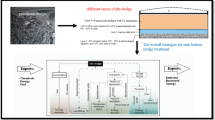Abstract
The possibility of use of waste cotton linters as oil sorbents by chemical modification such as acetylation and cyanoethylation was studied. The acetylation process was carried out in presence of acetic anhydride using either H2SO4 or HClO4 as catalyst. The acetylation treatment time was 30, 60 and 120 min and treatment temperature was room temperature, 50 and 70 °C. For cyanoethylation, the waste cotton linters were pre-treated with 2, 5 and 10% NaOH. The treatment temperature for cyanoethylation was room temperature, 50 and 70 °C and treatment time was 30, 60 and 120 min. Both the chemical modification processes were optimized on the basis of oil absorption capacity of the chemically modified cotton fibre with the help of MATLAB software. The modified samples were tested for its oleophilicity in terms of oil absorption capacity, oil retention capacity, oil recovery capacity, reusability of sample and water uptake and buoyancy as oil sorbent. Chemically modified fibres were characterized by Fourier transform infra red spectrophotometer, scanning electron microscope and degree of substitutions.












Similar content being viewed by others
References
C.P. Karan, R.S. Rengasamy, D. Das, Oil spill cleanup by structured fibre assembly. Indian J. Fibre Text. Res. 36, 190–200 (2011)
M. Hussein, A.A. Amer, I.I. Sawsan, Heavy oil spill cleanup using law grade raw cotton fibres: trial for practical application. J. Pet. Technol. Altern. Fuels 2(8), 132–140 (2011)
Jintao Wang, Yian Zheng, Aiqin Wang, Investigation of acetylated kapok fibres on the sorption of oil in water. J. Environ. Sci. 24, 1–22 (2012)
D.P. Chattopadhyay, V. Kaur, Oil spill cleanup by textiles. Handb. Compos. Renew. Mater. Funct. 4, Chapter 2, (Wiley, 2017), pp. 27–28
M. Nomack, Environmental impacts of oil spill, The encyclopedia of earth (Environmental Protection Agency, 2010)
J. Cai, Y. Chekmarev, J. Luo, C. Sears. Utilizing porous materials for oil spill cleanup. Gov. Sch. Eng. Technol. Res. J. (2010)
ITOPF, The International Tanker Owners Pollution Federation Limited, (ITOPF Ltd. London 2010), online at: http://www.itopf.com/spill-response/clean-up-and-response/alternative-techniques/
A.A. Allen, R.J. Ferek, Advantages and disadvantages of burning spilled oil. Int. Oil Spill Conf. Proc. 1993(1), 765–772 (1993)
M.O. Adebajo, R.L. Frost, Acetylation of raw cotton for oil spill cleanup application—an FTIR and 13C MAS NMR spectroscopic investigation. Spectrochim. Acta Part A Mol. Biomol. Spectrosc. 60(10), 2315–2321 (2004)
D.P. Chattopadhyay, J.K. Sharma, D.P. Kaushik, S. Patni, Some studies on sublimation transfer printing of jute, cotton and their blended fabrics. Colourage 43(7), 15–20 (1996)
M.D. Teli, S.P. Valia, Acetylation of banana fibre to improve oil absorbency. Carbohydr. Polym. 92(1), 328–333 (2013)
M.D. Teli, S.P. Valia, Application of modified coir fiber as eco-friendly oil sorbent. J. Fash. Technol. Text. Eng. 1(1), (2013). https://doi.org/10.4172/2329-9568.1000103
M.D. Teli, S.P. Valia, Acetylation of jute fiber to improve oil absorbency. Fibres Polym. 14(6), 915–919 (2013)
W. Tsuji, R. Kitamaru, M. Imai, Studies on the fibrous acetylation of cotton (II)—properties of acetylated cotton prepare by the liquid phase method. Bull. Inst. Chem. Res. Kyoto Univ. 43(2), 167–178 (1964)
C.F. Goldthwait, in Fibres from cotton. Acetylation to make a new textile. The Yearbook of agriculture series (1950–1951), pp. 421–426
E. Honold, R.E. Boucher, E.L. Skau, The effect of partial acetylation on the pore-size distribution of cotton fabrics. Text. Res. J. 26, 263–271 (1956)
E.M. Buras, S.R. Horbart, C. Hamalainen, A.S. Cooper, A preliminary report on fully acetylated cotton. Text. Res. J. 27, 214–222 (1957)
N.E. Thompson, G.C. Emmanuel, K.J. Adagadzu, N.B. Yusuf, Sorption studies of crude oil on acetylated rice husks. Arch. Appl. Sci. Res. 2(5), 142–151 (2010)
A.K. Bledzki, A.A. Mamun, M. Lucka-Gabor, V.S. Gutowski, The effect of acetylation on properties of flax fibres and its polypropylene composites. eXPRESS. Polym Lett. 2(6), 413–422 (2008)
H.S. El Sayad, S.R. Ahmed, A.A. El- Halwagy, Mathematical approach for cyanoethylated regenerated cellulosic fabrics and their blend. Res. J. Text. Appar 11(1), 46–56 (2007)
A.H. Gruber, N.M. Bikales, One-step process of cyanoethylation of cotton. Text. Res. J. 26, 67–73 (1956)
R.M. Reinhardt, J.D. Tallant, The influence of micronaire fineness and prior treatments on the cyanoethylation of cotton. Text. Res. J. 27, 24–29 (1957)
J. Compton, Preliminary report on service uses of cyanoethylated cotton products. Text. Res. J. 27, 222–231 (1957)
J. Compton, W.H. Martin, B.H. Word, R.P. Barber, The cyanoethylation of cotton. Text. Res. J. 26, 47–66 (1956)
Author information
Authors and Affiliations
Corresponding author
Rights and permissions
About this article
Cite this article
Chattopadhyay, D., Umrigar, K. Chemical Modification of Waste Cotton Linters for Oil Spill Cleanup Application. J. Inst. Eng. India Ser. E 98, 103–120 (2017). https://doi.org/10.1007/s40034-017-0107-y
Received:
Accepted:
Published:
Issue Date:
DOI: https://doi.org/10.1007/s40034-017-0107-y




